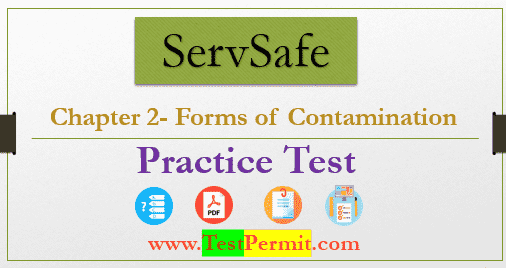ServSafe Forms of Contamination Practice Test (Chapter 2) Quiz Question Answers: Our free ServSafe practice test is also available in printable PDF.
Prepare for your ServSafe exams with our free ServSafe practice tests. The program includes the following training/certification courses: ServSafe Food Handler, ServSafe Manager, ServSafe Alcohol, and ServSafe Allergens.
Chapter 2 focuses on various forms of contamination and the potential consequences of these contaminations. Before studying and obtaining a food handler’s card, food workers must thoroughly understand the sources and types of contamination.
| Test Mode | Online Practice Test |
| Category | ServSafe |
| Test Name | ServSafe Practice Test |
| Content | Chapter 2 |
| Practice Test Registration | Not Required |
ServSafe Forms of Contamination Practice Test (Chapter 2)
By the end of this ServSafe Forms of Contamination Practice Test (Chapter 2), you should be able to identify the following:
- Biological, chemical, and physical contaminants and ways to prevent food from being contaminated by them
- How to prevent the deliberate contamination of food
- The correct response to a foodborne-illness outbreak
- The most common food allergens and how to prevent exposure to food allergens
Disclaimer: Not affiliated with or endorsed by the National Restaurant Association Educational Foundation (NRAEF). ServSafe is a registered trademark of NRAEF and is used here solely for purposes of identification.
Reference
